Lego blocks (other plastic blocks are available) are arranged on a virtual 16 by 16 grid layout and a virtual cursor repeatedly scans the grid from left to right. As the cursor reaches each grid column, the blocks in that column trigger a note to be played, the pitch of which is determined by the vertical position of the block. Multiple blocks in a column result in multiple notes being played simultaneously.
Here's a diagram to show the principle more clearly. Time is on the horizontal axis and pitch on the vertical axis. (For simplicity this shows an 8 by 8 grid)
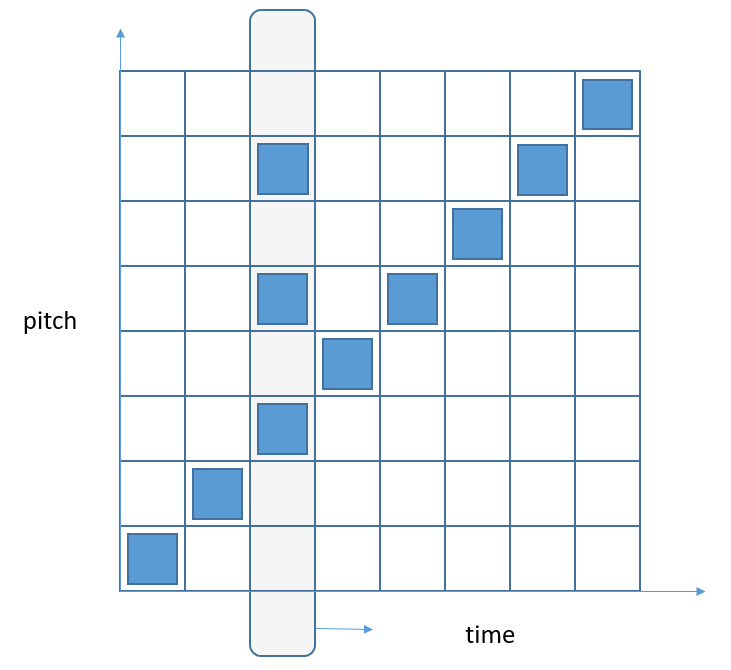
This arrangement of blocks would play an ascending scale. When the cursor is at the position shown a three note chord would be played.
The final pitch of a note is not only determined by the position on the grid, but also by the user-selectable scale. There are nine scales in the software which map position to pitch. The pitch can also be globally transposed in semitone or octave increments.
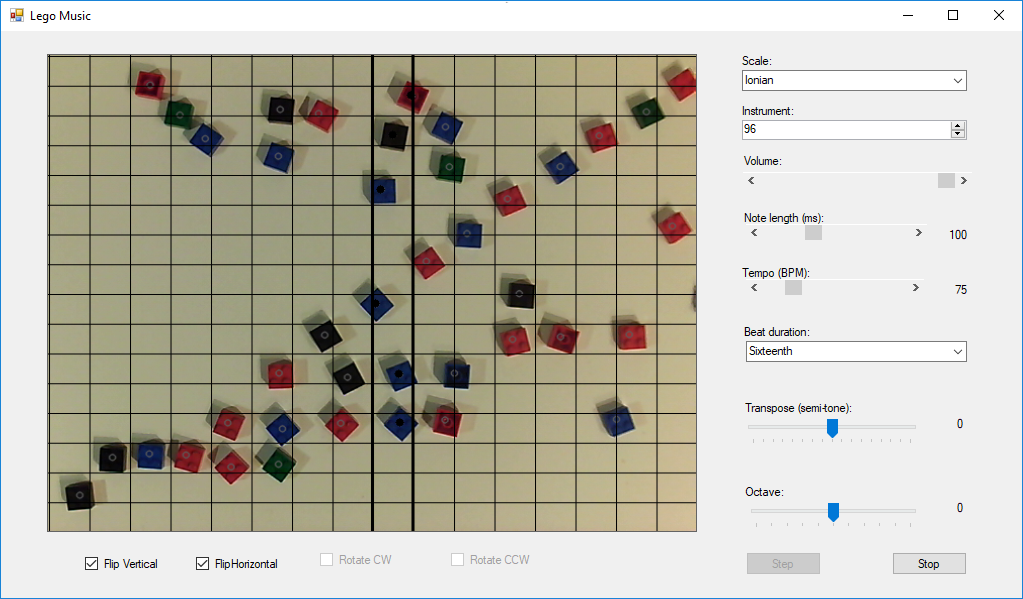

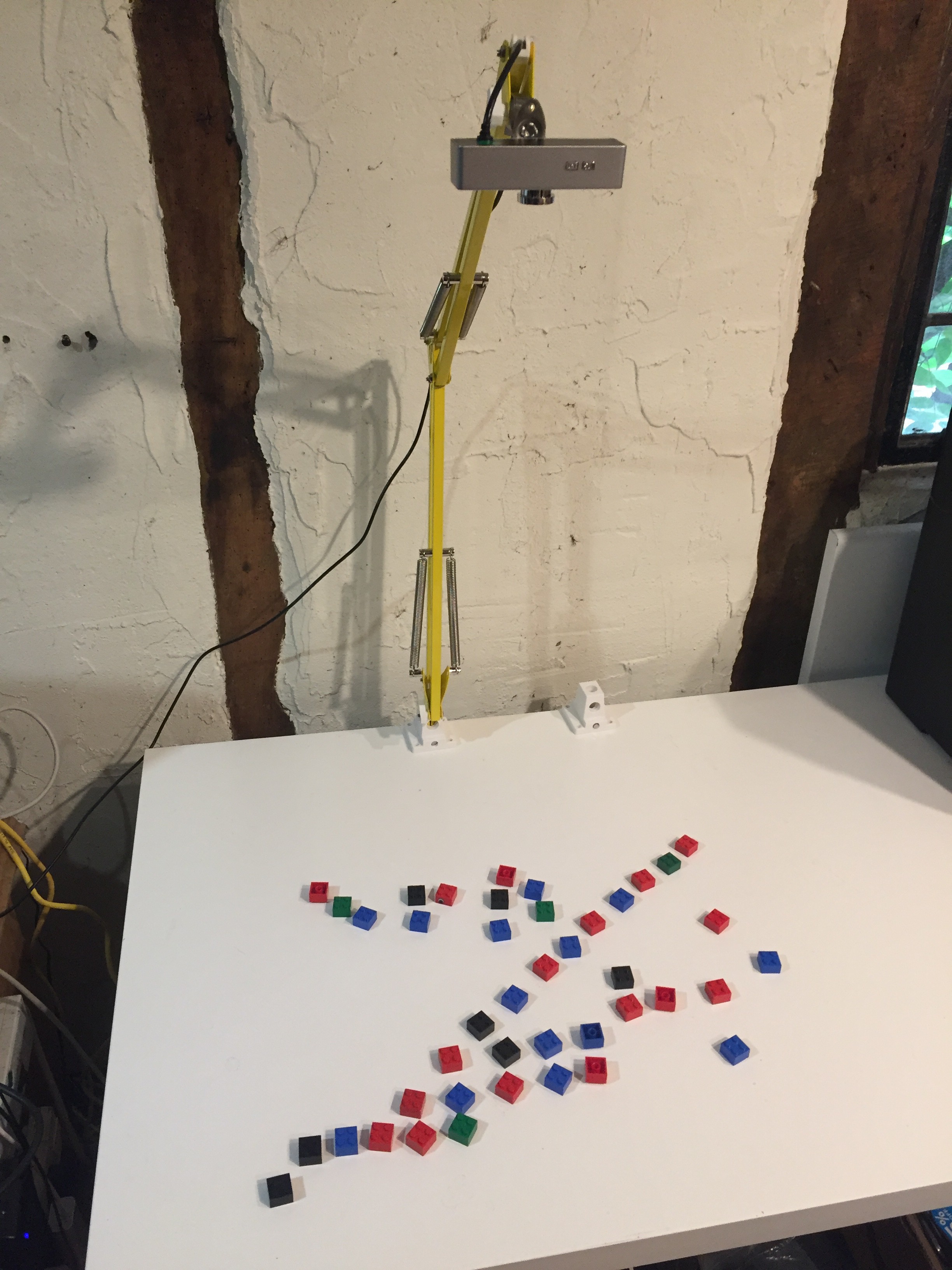
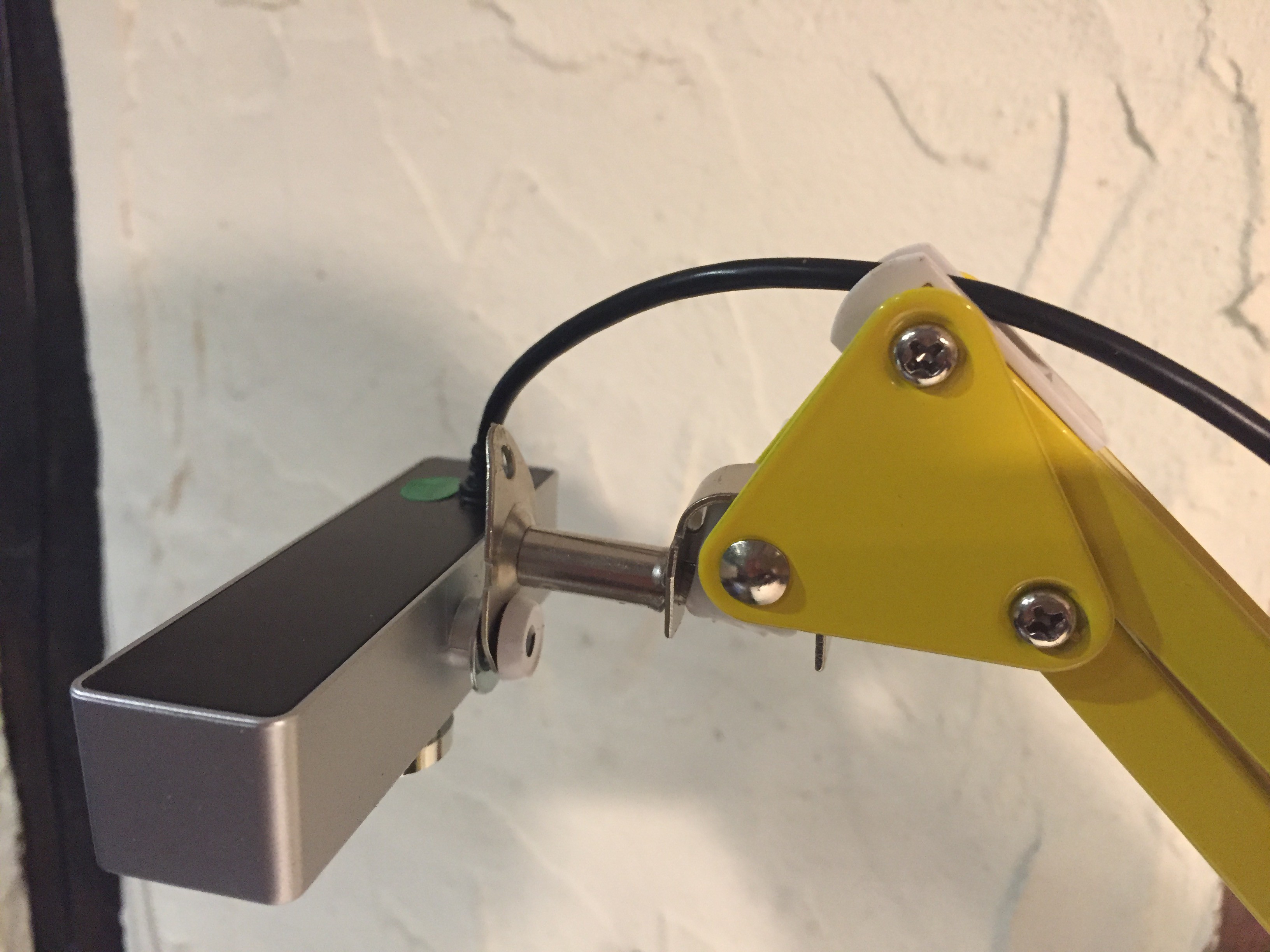

 Bruce Land
Bruce Land
 Michael Wessel
Michael Wessel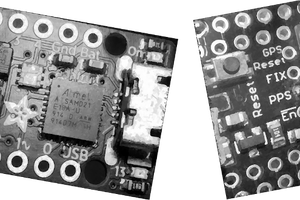
 Raymond Lutz
Raymond Lutz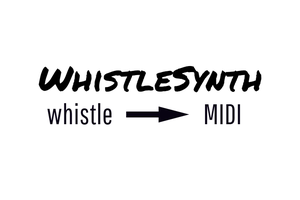
 Michael Erberich
Michael Erberich